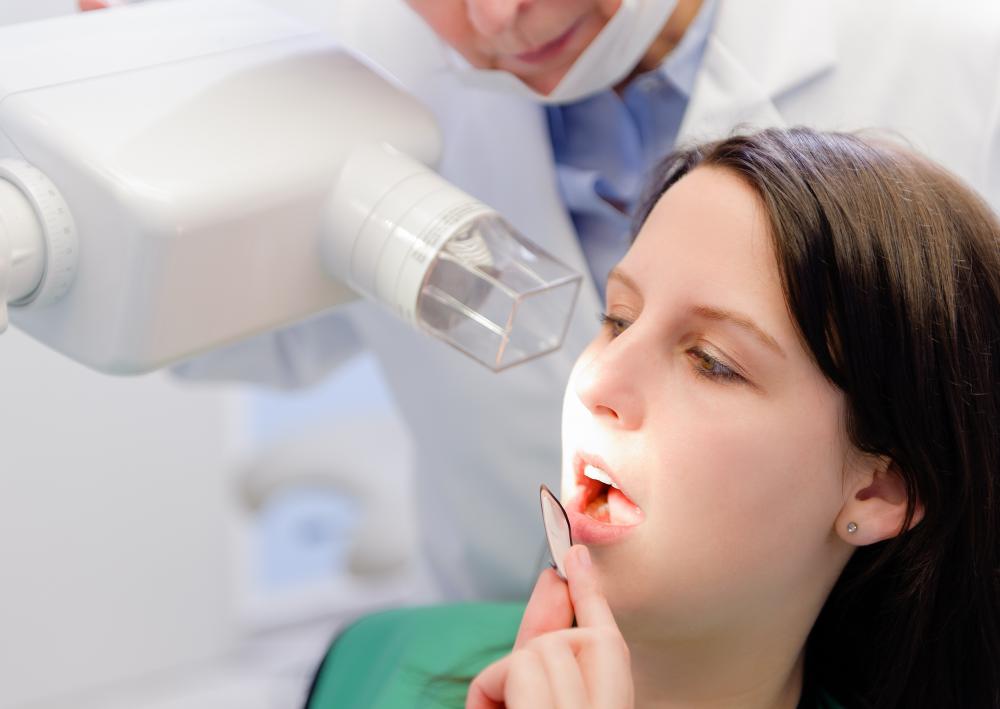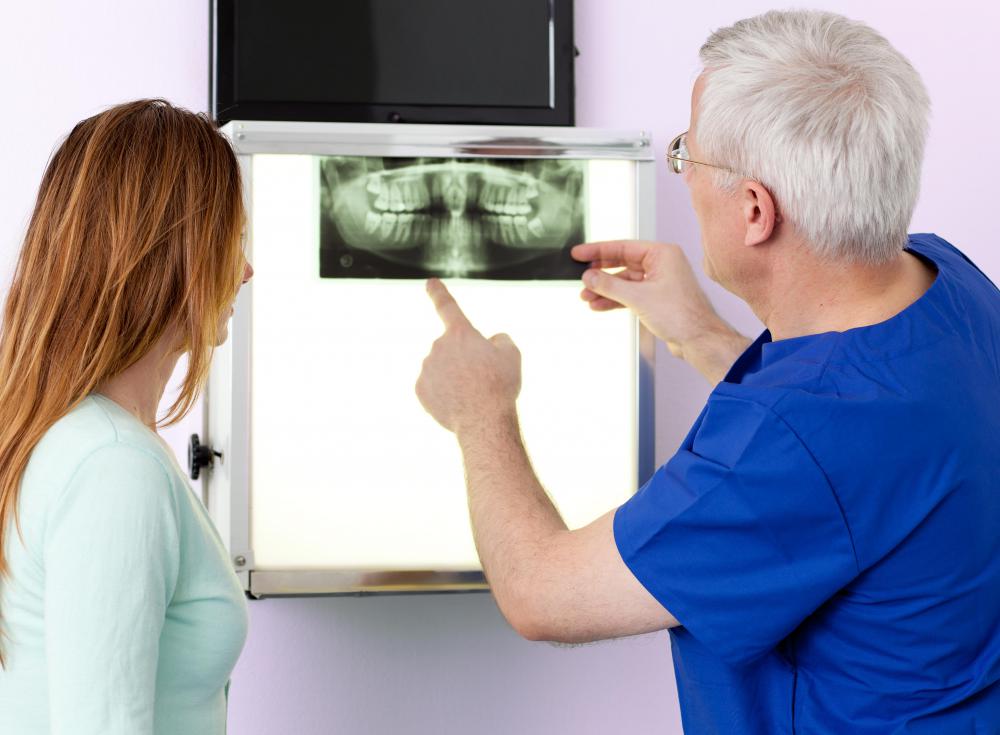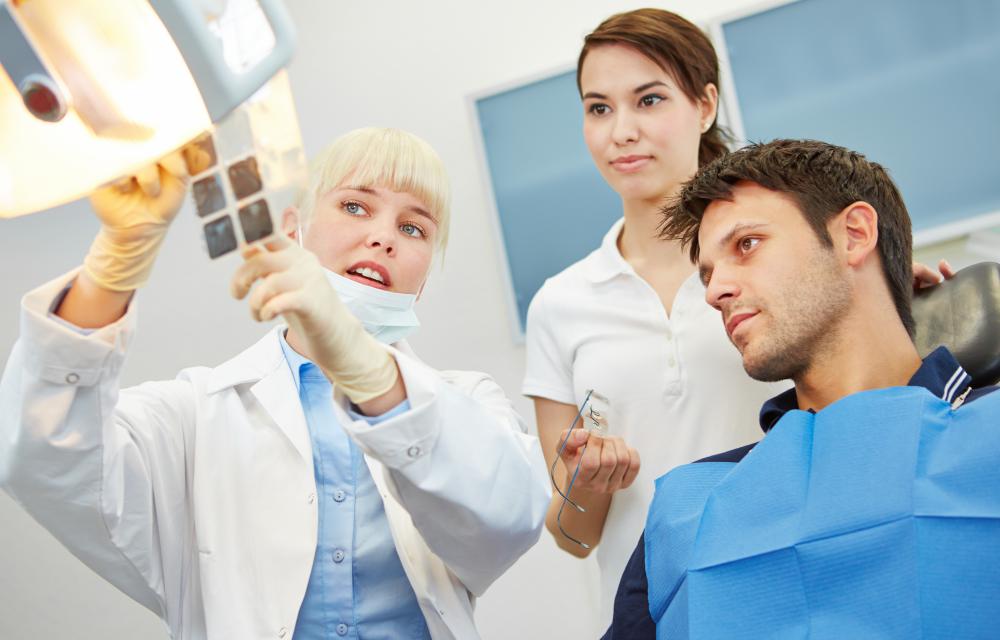At WiseGEEK, we're committed to delivering accurate, trustworthy information. Our expert-authored content is rigorously fact-checked and sourced from credible authorities. Discover how we uphold the highest standards in providing you with reliable knowledge.
What are the Different Types of Dental X-Ray Film?
There are three major types of dental x-ray film used for most procedures: bitewing, periapical and panoramic film. Each type is used to see teeth at a specific angle to look for things like decay, root problems and tartar buildup below the gumline. These dental x-rays fall into two categories. Bitewing and periapical films are called intraoral x-rays because the film goes inside the patient's mouth. Panoramic x-rays and some other imaging techniques used to look at the jaw and head more than the teeth are called extraoral, because the film stays outside on the cheek and jaw.
When a patient needs x-rays for general checkups to help find decay and other common problems, a full series of dental x-rays may be ordered. This is usually called a full-mouth series, or FMX. A set of bitewing and periapical films will be taken to show the teeth at several angles. This can give the dentist an almost 3D picture of teeth and roots.

Bitewing dental x-ray film is placed in the mouth with the patient biting down to hold the film in place. Usually two or four x-rays are taken of the back teeth, though some dentists may use bitewings in front, as well. These provide a picture of both upper and lower teeth and root systems. Periapical dental x-ray film is used to show teeth on either the upper or lower jaw instead of both. While the picture may be slightly distorted, this type of film shows the entire tooth from root tip to crown for closer analysis and comparison with the bitewing images.

Panoramic dental x-ray film is used to take one image of the entire set of teeth, sinus area and jaw. Special equipment is required to take these x-rays. This type of dental radiography can help reveal problems with the joints in the jawbone, bone spurs and a variety of dental problems that might not be apparent on other x-rays. All these features, including images of teeth that have not yet emerged, show in one single picture.

Dental x-rays are typically taken by a dental technician who stands outside the room while capturing the images. Some newer types of digital x-rays are available today, though all dentists might not yet have the equipment for digital imaging. Some digital x-rays show basic tooth structure like a regular dental x-ray film. Other x-rays that are used less frequently are typically designed to give pictures of the entire side of the head, the salivary glands or major facial bones.
AS FEATURED ON:
AS FEATURED ON:
















Discussion Comments
@andee-- I don't have dental insurance and if I am not having any problems, I decline getting the x-rays. I have always been concerned about the radiation as well, and don't have them unless I am having specific troubles.
One thing that always makes me curious about having these x-rays taken is how much radiation I am receiving.
The person who is giving the x-rays always stands outside the room, or behind a wall. This happens any time I have an x-ray done, whether I am at the dentist or not.
It just makes you wonder how safe they really are, and if they really need to be done that often?
@julies-- I am just the opposite, and would much prefer to have a panoramic x-ray done than a bitewing. I have a small mouth and it really hurts to have a bitewing in my mouth.
Even though it is only for a few seconds, I am so glad when they remove them. I also find myself almost ready to gag when they put them in. If they had to stay in much longer I probably would start gagging.
I know they take a bitewing x-ray more often than a panoramic, but sometimes it seems like they do this every time I am there.
For some reason getting a panoramic film of my mouth done always scares me. I don't know why, because all you do is stand there while the machine circles around you, but it always makes me feel uncomfortable.
My dentist only does this every 5 years, and every time I go to get my teeth cleaned, I hope this is not the time for the panoramic x-rays.
Post your comments